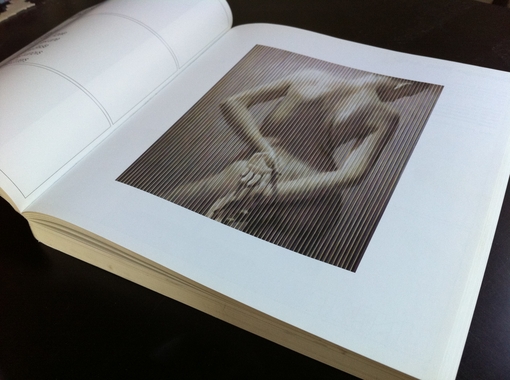A Time for Opportunities. Culture theorist Batna on Latvian contemporary painting
Sotheby's Russian and Ukrainian art sale on 9 June in cluded works by Latvian artists: a painting by Liga Purmale (b. 1948) Saturday Night Movie (2008-2009) and a painting by Ritums Ivanovs (b. 1968) Frame 05 (2002), both consigned by Riga Gallery. Two works by the Lithuanian artist Antanas Sutkus (b. 1939). A Group of Four Black and White Photographs (1971, 1972, 1975, 1955) and Jean-Paul Sartre in Nida, Lithuania (1965) were consigned by Anya Stonelake/White Space Gallery (London)
Baltic art would most probably not have had a start in any other category of Sotheby's sales, certainly not in London, the centre of the global trade. But Sotheby's does organize separate sales for Russian art, based on supply from Western private collections, and the demand by young Russian and Ukrainian collectors. The brand of Russian art provided access for Baltic art to the global market, and such a precedent allows one to presume that the collecting of Soviet contemporary art, associated with so called non-conformism, can now establish grounds for an assessment of Baltic art within the international market.
A significant role in the background is attributable to the Norton Dodge Collection of Art from the Soviet Union, donated to Rutgers University (USA) art museum, which laid the basis for research in Baltic art there. Up until 2006, work with the museum's non-conformist collection was led by Dr. Alla Rosenfeld, she then took up the post of Vice President of the Russian Paintings Department at Sotheby's. Regional and historic links are an advantage here: it can be expected that in the future also, Russian art sales at Sotheby's and other auction houses will continue to include contemporary artists from the Baltics, and this will admittedly help raise awareness of Baltic art.
It is a positive that all the works by Baltic artists at the auction were sold, even though, in line with the lack of competitive bidding throughout the auction, the prices stayed in the region of estimates. Works by Līga Purmale and Ritums Ivanovs went for 10,000 pounds each (estimate: 8,000-12,000 pounds); a group of four photographs by Antanas Sutkus sold for 3,500 (estimate: 3,000-4,000 pounds) and the photo of Sartre - for 1,500 pounds (estimate: 1,200-1,700 pounds). Although the level of the presale estimates was influenced by an in clination by auction houses (especially in existing con ditions) to stimulate the market with moderate presale estimates, in galleries the asking prices for similar works of equal importance are not much higher. Another factor is that Latvian artists are relative unknowns in international auction sales.
Generally the auction was not a success: as much as 60% of the109 works failed to sell, and sales amounted to a modest 899,350 pounds. Unsold lots included Oleg Vassiliev's Olga Mikhailovna and Natasha (1979), for which the highest price was estimated in the range of 180,000-220,000 pounds. Even though a broad spectrum of Russian stars, as well as young artists, was available, the offer was not particularly ambitious. The impressive paintings by Latvian artists distinguished themselves with their appeal. The sale's highlight - Alexander Kosolapov's Malevich-Black Square (1987) - went for the minimum estimate of 25,000 pounds. Gloomy predictions, based on the downturn in Russia's economy, had no basis. Together with sales of classic painting, Faberge and antiques, the Russian art sales from 8 to 10 June at Sotheby's netted 17.6 million pounds: half the amount of last year, but it passed the test. There was satisfaction about the sale of Boris Kustodiev's The Village Fair (1920), which sold for 2.8 million pounds - nearly triple the presale estimate.
Latvian contemporary painting at SCOPE Basel 2009: for Baiba Morkāne, the director of Bastejs Gallery, the pro-motion of the visibility of Latvian artists was one of the positive aspects of participation in the Sotheby's Russian art sale. At that particular time, Morkāne was repre senting Latvian painting in Basel, where another brand - Art Basel - made the town the heart of the international art market. At the SCOPE satellite show, Bastejs presented Helēna Heinrihsone, Jana Briķe, Normunds Brasliņš and Ritums Ivanovs. The gallerist confirmed that He & She by Ivanovs was sold (with a small discount) for 15,000 Swiss francs - the price (around 8500 pounds) is comparable to the Sotheby's result, which includes the buyer's premium (20%). Bastejs Gallery has been invited to travel to future SCOPE venues and the gallerist has set her sights on New York, where in March next year it will take place at the same time as The Armory Show.
Originally published in visual arts magazine Studija
Text by Marita Batņa, culture theorist

